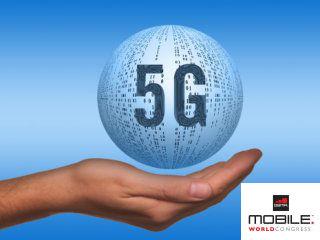‘It is hard to believe that 2016 marks 25 years since the launch of the first 2G network and the first mobile phone call. Now it’s nearly impossible to imagine our lives without mobile’, Mats Granryd, Director General of GSMA, said in his introduction to the Mobile World Congress

Now there is a huge excitement around 5G that will offer enormous potential for both consumers and industry. To being considerably faster than existing technologies, 5G holds the promise of applications with high social and economic value, leading to a ‘hyper connected society’.
by
N. Peter Kramer
Looking around in this event in Barcelona you can read everywhere around you, on banners, publications, screens etcetera what he means: mobile is everything, the clear slogan of MWC 2016.
After 2g came 3G, and at the end of 2015 adoption of 4G technologies surpassed the milestone of one billion 4G connections in more than 150 countries with a 4G network. Now there is a huge excitement around 5G that will offer enormous potential for both consumers and industry. To being considerably faster than existing technologies, 5G holds the promise of applications with high social and economic value, leading to a ‘hyper connected society’. South Korea plans to showcase its 5G services at the Olympic Games in 2018. European Commissioner Oettinger, also present in Barcelona, suggested that Europe could make use of the European Football Championship in 2020 to showcase Europe’s 5G competence to its citizens.
Guo Ping, Deputy Chairman of the Board and Rotating CEO of Huawei Technologies stated however that not even the most innovative carriers won’t use 5G commercially before 2020 and large-scale 5G rollout will probably take even longer. ‘So before 5G arrives, what is necessary to do to capitalise on the opportunities emerging from the digital transformation of telecommunications and other industries?’, was his question.
Three things to do before 5G
Huawei’s Rotating CEO called for three actions before 5G arrives. The first thing to do is to increase connectivity. ‘Today, 99% of all equipment remains unconnected to the Internet. That will change and as it does; we must improve connectivity by increasing the number of connections that can be supported’, he stated.
‘The second thing we must do between now and 2020 is shift from supply-driven to being demand-driven so as to enable the digital transformation of vertical industries’; explaining this, Guo Ping said that ‘industries will demand more from networks: more capacity, more bandwidth, less latency’. He gave safe cities as an example. Before governments can build smart cities, they need to build safe cities. Municipalities must increase their ability to prevent crises, respond to emergencies and make decisions quickly.
The last and third thing Guo Ping mentioned was the must to redefine network capabilities. Carriers need to establish software-defined architecture, achieve agile operations, and develop big data operation capabilities.
4.5G booming in 2016
In October 2014 Huawei proposed 4.5G as an interim standard. This standard became a widely shared rallying point for operators moving beyond LTE. After a year of intensive research and collaboration, the 4.5G industry is now beginning to take shape. 2016 will be the first year in which large-scale commercial 4.5G networks are rolled out worldwide; after tests in 10 countries all over the world like Norway, China Germany, Spain, Japan and Canada.
4.5G is a stepping stone on the way to 5G. Using existing equipment, 4.5G enables faster connections and a better user experience. It also incorporates new technologies such as NB-IoT and broadband trunking, allowing operators to leverage their existing networks to better service the communication needs of industry markets.







